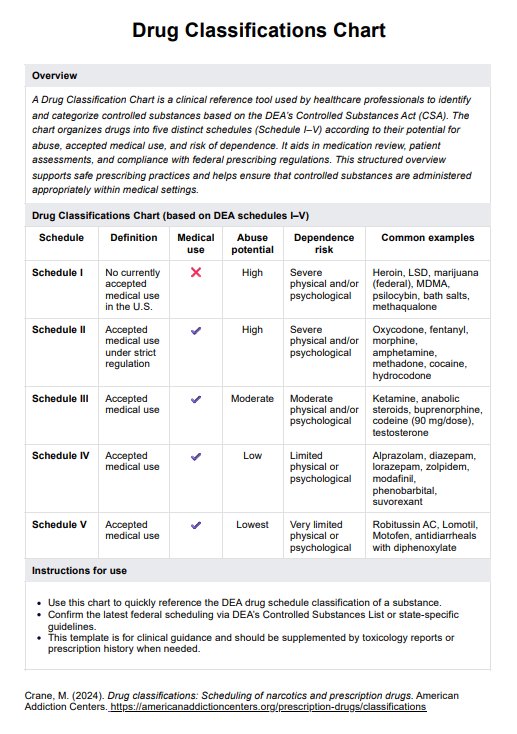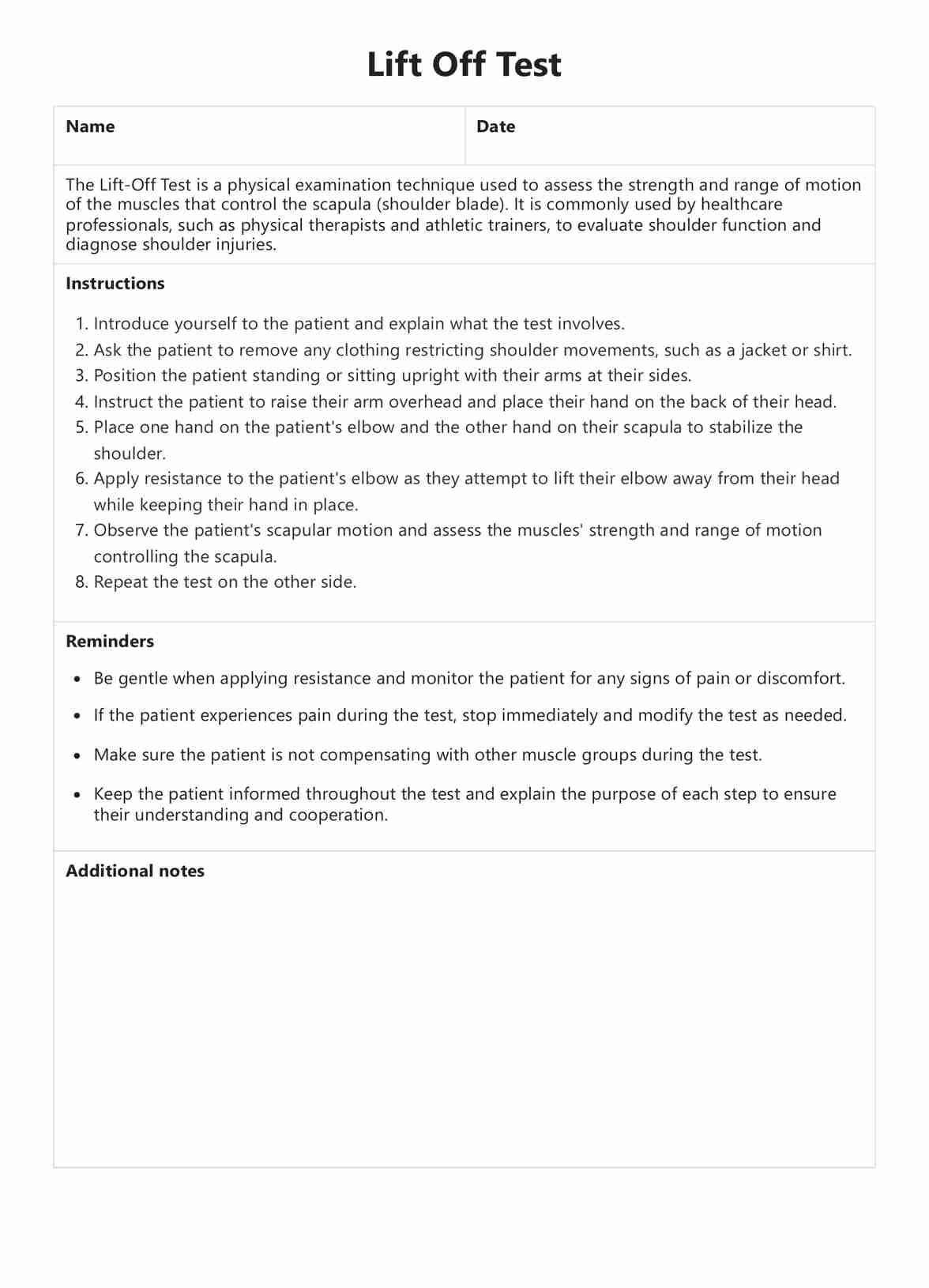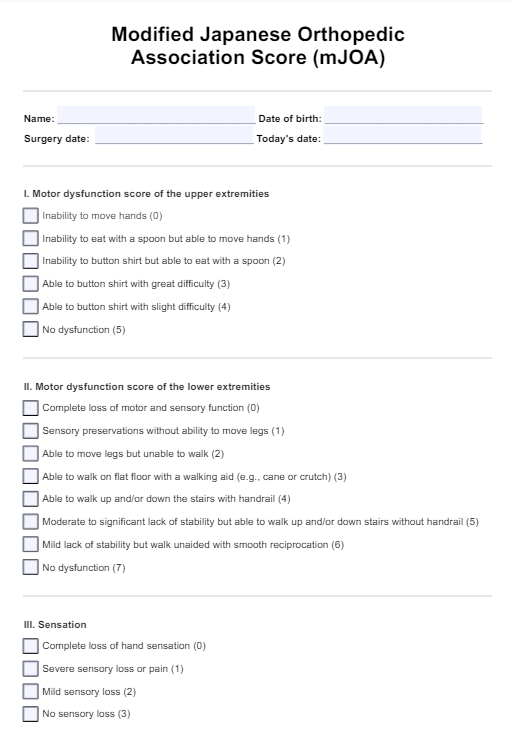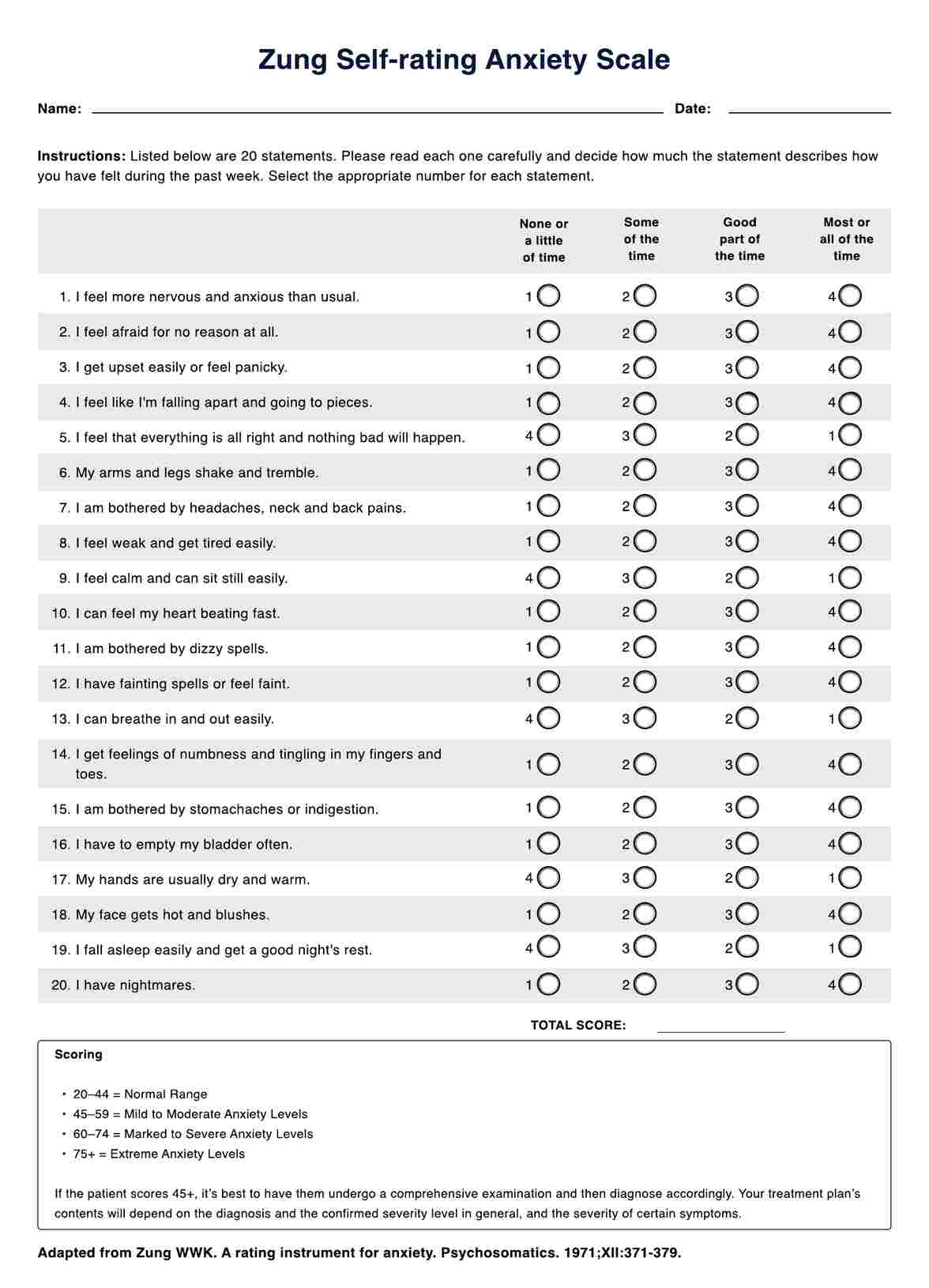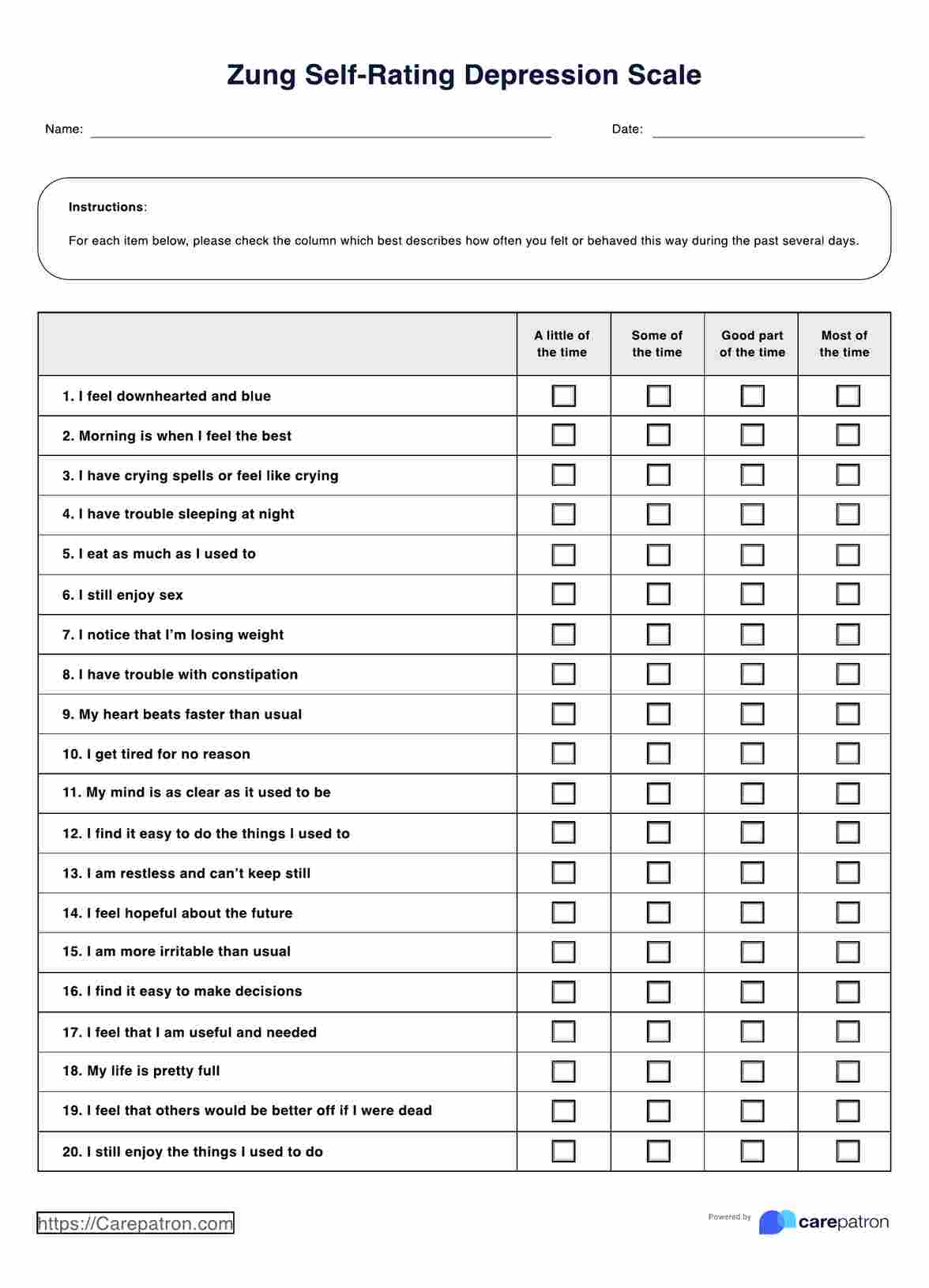A posterior sag refers to the visible drop of the tibia behind the femur when the knee is flexed at 90 degrees. This often signals a potential injury to the posterior cruciate ligament, which normally prevents excessive backward movement of the tibia.
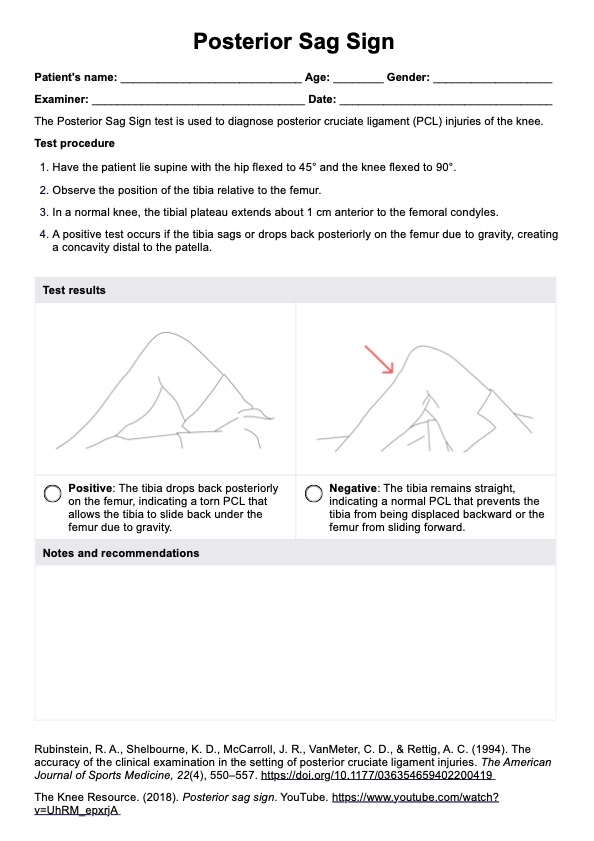
Posterior Sag Sign
Detect posterior cruciate ligament injuries accurately with the Posterior Sag Sign, a reliable physical examination maneuver.
Posterior Sag Sign Template
Commonly asked questions
A positive Posterior Sag Sign suggests the proximal tibia shifts backward during knee flexion, indicating possible posterior cruciate ligament insufficiency. Posterior tibial displacement points to compromised PCL stability, allowing the tibia to sag relative to the femur.
In some mild cases, especially with partial tears, conservative management (like bracing and physical therapy) may help the PCL heal. However, complete tears often require surgical intervention to restore full knee stability and function.
EHR and practice management software
Get started for free
*No credit card required
Free
$0/usd
Unlimited clients
Telehealth
1GB of storage
Client portal text
Automated billing and online payments


